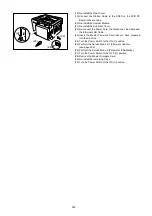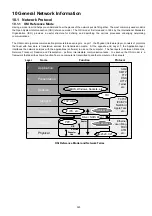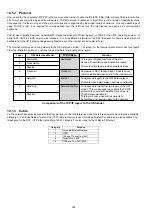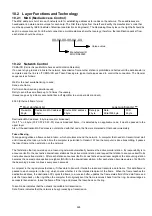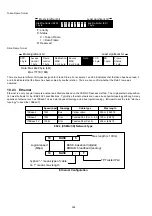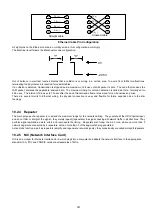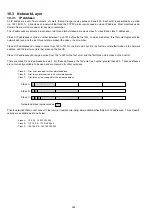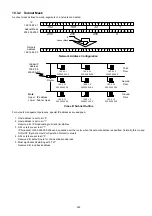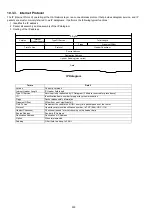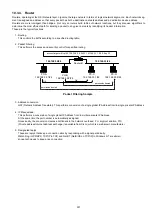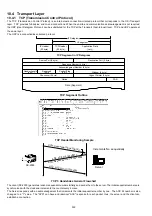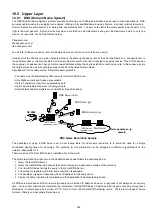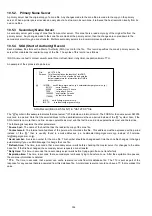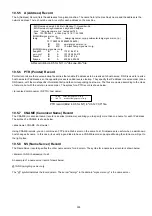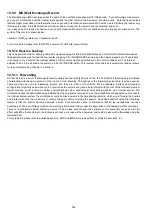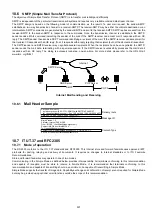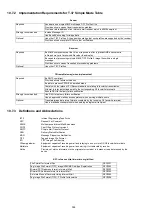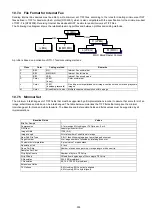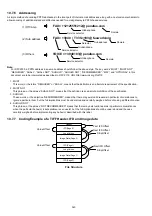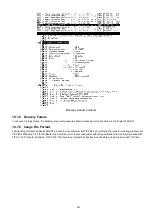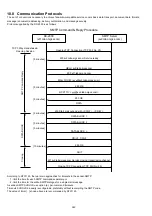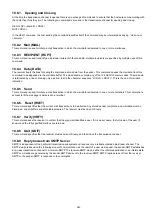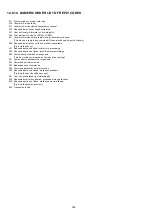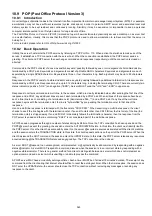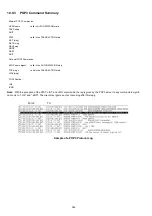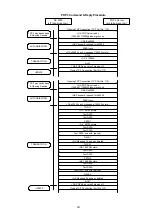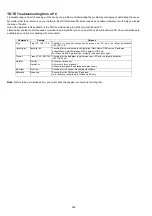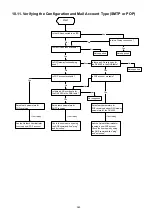
336
10.5.9
MX (Mail Exchange) Record
The Mail Exchange (MX) record specifies the name of the host that processes mail for this domain. If you list multiple mail servers,
you can set a preference number (value) that specifies the order in which the mail server should be used. Note that lower values
indicate higher precedence, and that mailers are supposed to ramdomize same-value MX hosts so as to distribute the load evenly
if values are equal. If the first preferred mail server does not respond, the second one is contacted, and so on.
If you want a host to receive its own mail, you should create an MX record for your host’s name, pointing at your host’s name. The
syntax of this record is shown below:
<domain> IN MX <preference> <mailserver host>
For a more detail, please refer to RFC974 document at URL http://www.ietf.org/.
10.5.10 Reverse Lookup
This is a special domain for allowing address to name mapping. As Internet host addresses do not fall within domain boundaries,
this special domain was formed to allow inverse mapping. The IN-ADDR.ARPA domain has four labels preceding it. These labels
correspond to the 4 octets of an Internet address. All four octets must be specified even if an octet contains zero. The Internet
address 128.32.0.4 is located in the domain 4.0.32.128.IN-ADDR.ARPA. This reversal of the address is awkward to read but allows
for the natural grouping of hosts in a network.
10.5.11. Forwarding
A Slave Server is a server that always forwards queries it cannot satisfy from its cache, to a fixed list of forwarding servers instead
of interacting with the name servers for the root and other domains. The queries to the forwarding servers are recursive queries.
There may be one or more forwarding servers, and they are tried in turn until the list is exhausted. A Slave and forwarder
configuration is typically used when you do not wish all the servers at a given site to interact with the rest of the Internet servers. A
typical scenario would involve a number of workstations and a departmental timesharing machine with Internet access. The
workstations might be administratively prohibited from having Internet access. To give the workstations the appearance of access to
the Internet domain system, the workstations could be Slave servers to the timesharing machine, which would forward the queries
and interact with other name servers to resolve the query before returning the answer. An added benefit of using the forwarding
feature is that the central machine develops a much more complete cache of information that all the workstations can take
advantage of. The use of Slave mode and forwarding is discussed further under the description of the named bootfile commands.
There is no prohibition against declaring a server to be a slave even though it has primary and/or secondary zones as well; the
effect will still be that anything in the local server’s cache or zones will be answered, and anything else will be forwarded using the
forwarders list.
For more detail, please refer to published book (i.e. DNS and BIND etc) provided from O’ Reilly & Associates. Inc.
Содержание Panafax DX-2000
Страница 2: ......
Страница 27: ...27 9 1 Screw 19 10 Release two Latch Hooks 11 Remove the SNS Assembly 121 9 10 11 ...
Страница 49: ...49 2 15 Screw Identification Template ...
Страница 56: ...56 3 7 2 Printer Circuit 429 650 622 744 607 665 555 506 432 408 405 433 502 610 610 610 621 507 507 639 ...
Страница 57: ...57 3 7 3 Option Cassette Circuit 555 748 728 744 928 953 730 731 731 952 944 930 931 931 ...
Страница 58: ...58 3 7 4 LAN Control Circuit 522 CN50 1102 1104 1101 N C N C RD N C N C RD TD TD ...
Страница 59: ...59 3 7 5 Page Description Language Printer Interface Kit ...
Страница 287: ...314 B Supplies Order No Picture Description DZHT000004 Verification Stamp UG 3313 Toner Cartridge ...

